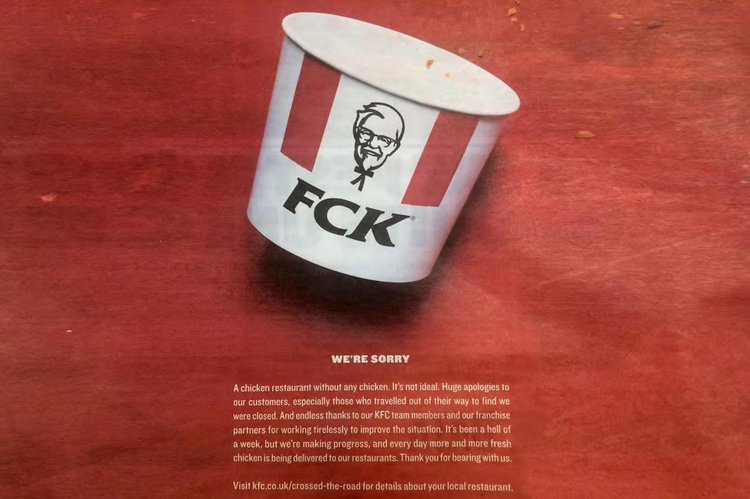Journalism and PR: Two sides of the same coin

In a way, public relations and journalism can be seen as two sides of the same coin and that’s why …

What is reactive PR and how does it differ from a proactive PR campaign? Our PR Account Executive, Jess, has got the detailed guide you need to master the practice.
Building a brand’s reputation usually takes time – months or even years of consistent messaging and carefully planned campaigns. But sometimes, a quicker, more responsive approach can be just as powerful. That’s where reactive PR comes in. It’s all about jumping on trending stories, breaking news or cultural moments to get your brand seen and heard in real time.
One of the most common tactics within reactive PR is newsjacking, which involves inserting your brand into a breaking news story to gain media coverage or online attention. For example, a cybersecurity firm might offer expert insights during a major data breach that's making headlines.
However, reactive PR is much broader than that; it also includes things like social media responses, expert commentary, blog posts, brand partnerships, stunts, sponsorships and even crisis management. Newsjacking is just one part of a wider reactive PR strategy that allows brands to respond creatively and quickly to what’s happening in the world around them.
When done well, reactive PR can increase visibility, improve SEO and help position your brand as a credible voice in your industry. Of course, it’s not without its risks – react too slowly or misjudge the mood, and it can easily backfire. But with the right timing and tone, it can be a smart and impactful way to cut through the noise.
So how does reactive PR compare to the more traditional, proactive approach and when should you use it? Let’s take a closer look.
Proactive PR is a regular PR campaign that involves long-term planning and organisation to identify ways to communicate your brand or client’s messaging to your target audience.
Reactive PR, on the other hand, takes advantage of an existing trend, story, celebrity culture, or entertainment release to ride on the buzz. This can either apply to a crisis comms situation concerning your brand or client which requires an immediate response to take control of the discussion, or breaking news or trends happening in your brand or client’s industry.

A prime example of reactive PR during a time of crisis for a brand is KFC’s control over a situation where it had run out of chicken in 2018. Rather than allowing the story to be controlled by the situation, KFC instead took out full page advertisements in The Sun and The Metro newspapers to announce that its stores would be closed due to the shortage, humorously rearranging its logo in the image to ‘FCK’ and apologising for the inconvenience.
Thanks to the convenience of social media, you likely see examples of reactive PR everyday without realising it. Anytime you see a brand posting a humorous response to something on social media, often on another brand’s post, that’s reactive PR. This is made even easier with the likes of TikTok, which allows users to ‘stitch’ other users’ videos and record on top of the content, creating the perfect opportunity for people to ride on the buzz of a trending video by posting their own response or comment. Aldi UK in particular is a stickler for this.

In today’s fast-moving digital world, brands are expected to produce constant content just to stay visible. This can be challenging, especially when competing for attention alongside influencers, celebrities and entertainment giants on the same platforms. Reactive PR offers a way to cut through the noise by creating timely, relevant content that taps into what people are already talking about.
Because it involves responding to existing stories or trends, reactive PR can be quicker to execute and often more cost-effective than traditional campaigns. It also creates opportunities for wide-reaching, multi-platform coverage when a response gains traction.
Beyond visibility, reactive PR can support SEO by generating backlinks through media coverage or timely blog posts that rank well in search results. It’s also a powerful tool for positioning a brand or spokesperson as a trusted expert. Offering relevant, well-timed commentary not only builds credibility but can also strengthen relationships with journalists who are working to tight deadlines and looking for reliable contributors.
Reactive PR can come in the form of opinion pieces, blog posts, social media responses, advertising, brand partnerships, sponsorships, events, fundraising and more.
A great example of reactive PR being used through brand sponsorships is the way the London Dungeon responded to the Willy’s Chocolate Experience scandal in Glasgow. The latter, an unlicensed event by The House of Illuminati, was intended to be a family-friendly Charlie and the Chocolate Factory experience, when in reality it looked nothing like the fantastical AI-generated images used in its marketing. Instead, the event consisted of minimal decorations in a warehouse, employees who were reading off an AI generated script, and characters not even in the popular children’s film.

Sixteen-year-old Felicia Dawkins played ‘The Unknown’, an entirely made up masked villain. After the £35-per-ticket event was shut down, it blew up on social media through memes and received a lot of responses from other brands. The most notable reaction to come out of this was from the London Dungeon which gave Dawkins the opportunity to train with its performance team and make a guest appearance at the attraction.
It’s important to stay on-topic when attempting reactive PR, especially if your end goal is to come across as an industry expert and build a relationship with journalists within an industry. So, make sure to identify your expertise and what topics are relevant to you when planning any PR campaign.
Speed is also highly important and it’s for this reason that reactive PR is usually done through digital channels, as they provide instant publication. If you react too late, then it can come across as ‘jumping on the bandwagon’ and by this point, your competitors will have likely taken the opportunity for themselves. So, if you’re going to try your hand at reactive PR, then always make sure you can move quickly enough to get in first - otherwise your efforts are best spent elsewhere.
In order to grab these opportunities, you can set up alerts for breaking news and trending topics via tools such as Google Alerts. It’s also important to stay on top of social media to keep an eye on any trending topics being frequently shared within your industry’s circle.
For when the moment does come, it’s important to ensure that your brand or client already has a thought leader/spokesperson prepared with a headshot image and pre-planned statements, comments or buzz words for such situations. Having a spokesperson gives further backing to you or your client’s expert opinion and audiences will be more likely to trust a friendly face over a statement from a wider team.
Finally, stay on top of things! The last thing you want to do is prepare a response only to find that the general attitude towards the story has changed dramatically or another brand has beaten you to it. Make sure to monitor the media for general reactions to the trend or news story, new developments, or what other brands are doing.
Of course, as beneficial as reactive PR can be for driving outreach for you or your client’s brand, it can also come with its risks.
Ensuring what you’re reacting to is relevant to your brand is essential, as consumers will call out inauthentic campaigns when they see them. On top of this, if you comment on a topic that is unlikely to reach your target audience and doesn’t align with your long-term strategy, it is ultimately a waste of time and resources.
You need to consider whether you or your client’s comment on a topic or news story is appropriate or not, to avoid being considered ‘tone deaf’. When the Coronavirus pandemic first broke out, actress Gal Gadot (Wonder Woman, Death on the Nile), posted a video of herself and 24 other celebrities singing John Lennon’s ‘Imagine’ in solidarity with everyone who had gone into lockdown. The video was poorly received by the general public who did not appreciate receiving ‘we’re all in this together’ messaging from celebrities living in mansions.
In contrast, Uber’s campaign during the pandemic was very positively received because it encouraged customers to stay at home and avoid using its services with its ‘thank you for not riding’ messaging.
Brands need to be very mindful when commenting on a news story of the wider context. In 2017, Pepsi released a short film featuring Kendall Jenner who is attending a photoshoot while a peaceful protest takes place outside. The reality star then joins the protest and hands one of the police officers nearby a can of Pepsi. While the campaign was supposed to represent unity, peace and understanding, it was considered to be commentating on the Black Lives Matter and police brutality. Worse still, the campaign was deemed to trivialise the subject, especially once it was reported that all of the people credited on the campaign were white. The backlash was so severe that the campaign was pulled entirely.
Credibility is key when it comes to reactive PR, as consumers increasingly favour businesses that are authentic and stay in their lanes. In particular many brands are starting to be called out for empty marketing campaigns surrounding sustainability (even to the point of developing the term ‘greenwashing’ to describe inauthentic sustainability marketing campaigns) and awareness months such as Black History Month and Pride.
In summary, reactive PR is a fast-moving strategy that involves responding to breaking news, trends or cultural moments to generate timely, relevant exposure for a brand. Tactics can include everything from newsjacking and social media responses to blog posts, expert commentary, brand partnerships and event sponsorships.
Unlike proactive PR, which relies on long-term planning, reactive PR thrives on immediacy and adaptability. When executed well, it can boost visibility, improve SEO and position a brand as a credible voice within its industry. However, it carries risks if the response feels inauthentic, poorly timed or misaligned with the brand’s values.
Need help with a reactive PR campaign? Get in touch with us today.
Let's talk